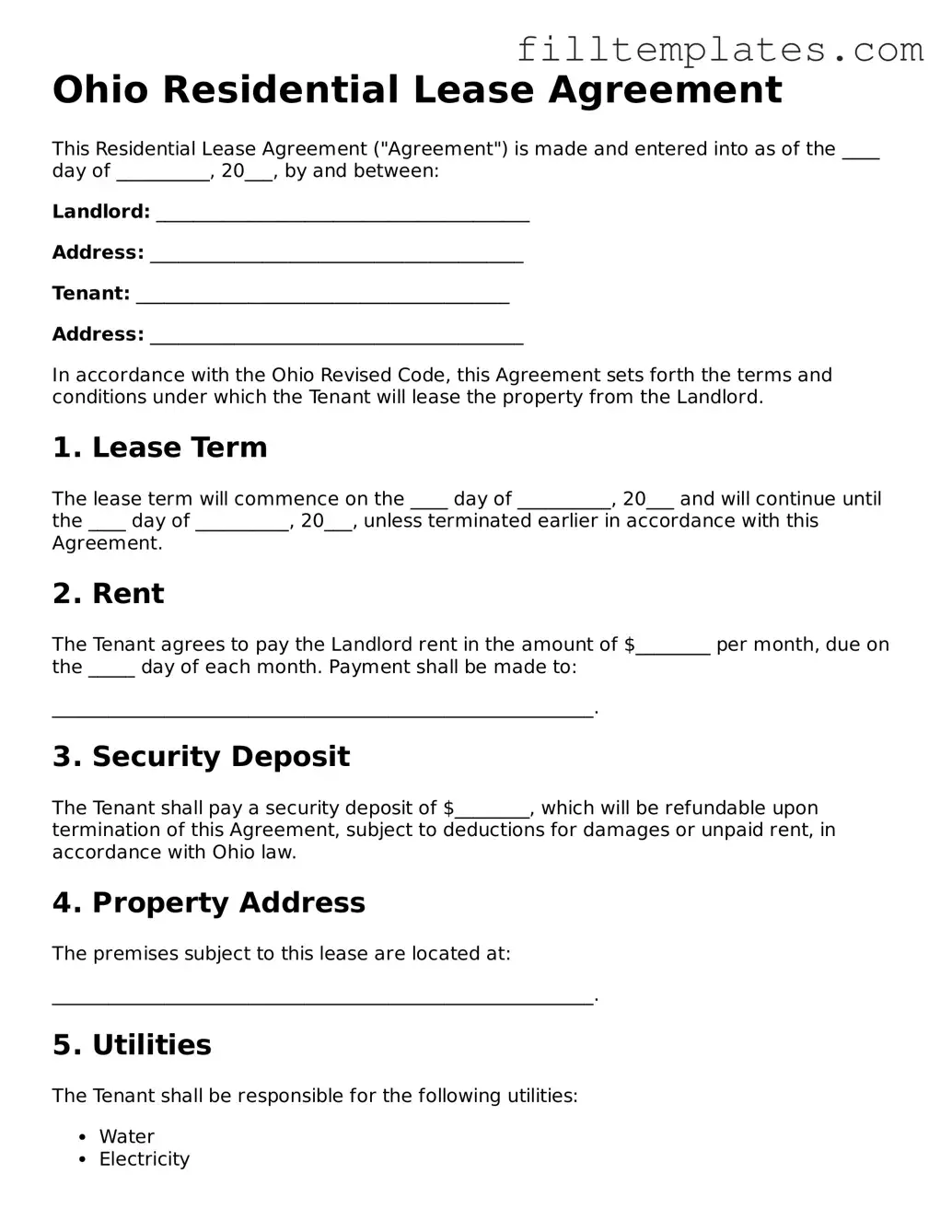Ohio Residential Lease Agreement
This Residential Lease Agreement ("Agreement") is made and entered into as of the ____ day of __________, 20___, by and between:
Landlord: ________________________________________
Address: ________________________________________
Tenant: ________________________________________
Address: ________________________________________
In accordance with the Ohio Revised Code, this Agreement sets forth the terms and conditions under which the Tenant will lease the property from the Landlord.
1. Lease Term
The lease term will commence on the ____ day of __________, 20___ and will continue until the ____ day of __________, 20___, unless terminated earlier in accordance with this Agreement.
2. Rent
The Tenant agrees to pay the Landlord rent in the amount of $________ per month, due on the _____ day of each month. Payment shall be made to:
__________________________________________________________.
3. Security Deposit
The Tenant shall pay a security deposit of $________, which will be refundable upon termination of this Agreement, subject to deductions for damages or unpaid rent, in accordance with Ohio law.
4. Property Address
The premises subject to this lease are located at:
__________________________________________________________.
5. Utilities
The Tenant shall be responsible for the following utilities:
- Water
- Electricity
- Gas
- Internet and Cable
6. Maintenance and Repairs
The Landlord shall be responsible for maintaining the common areas and the structural integrity of the property. The Tenant agrees to keep the premises clean and notify the Landlord of any needed repairs.
7. Termination
This lease may be terminated by either party with at least _____ days’ written notice prior to the expiration of the lease term.
8. Governing Law
This Agreement will be governed by the laws of the State of Ohio.
IN WITNESS WHEREOF, the parties have executed this Residential Lease Agreement as of the day and year first above written.
______________________________
Landlord Signature
______________________________
Tenant Signature
